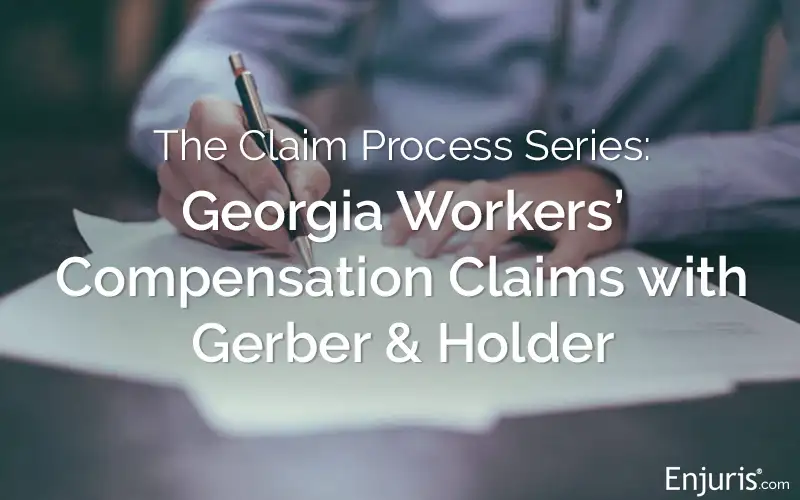
It’s very important that you put away your smartphone while you’re driving. According to the Centers for Disease Control and Prevention (CDC), distracted driving causes 9 deaths and 1,000 crashes every day in the United States. What’s more, holding a smartphone while operating a vehicle in Georgia (and most other states) is against the law.
However, once you’ve been in an accident, pulling out your smartphone can help ensure that you recover the damages you deserve.
Not convinced?
Let me explain.
The importance of car accident photos
Your first step following a car accident is to assess your injuries and get medical treatment for those in need. Once you’ve ensured that everyone is safe and the police have been called, it’s time to turn on your camera.
There are 4 main benefits associated with taking photographs after a car accident:
1. Photographs can be used as evidence to show the extent of your vehicle damage
If the other driver involved in your accident claims that the crash didn’t cause any damage to your car, pictures taken at the accident scene can prove otherwise.
What’s more, time-stamped photographs can prevent the at-fault driver (or the at-fault driver’s insurance company) from claiming that some of the damages to your car occurred after the accident.
Keep in mind that while insurance companies will often take photographs of your vehicle, these photographs might not be taken until hours, days, or even weeks after the accident.
2. Photographs can be used as evidence to show the extent of your injuries
Similar to photographs of vehicle damage, time-stamped photographs of your physical injuries can prevent the at-fault driver (or the at-fault driver’s insurance company) from claiming that you weren’t injured in the accident.
On top of that, photographs taken immediately after a crash generally make a bigger impression on juries than black and white X-rays or medical reports.
3. Photographs can be used as evidence of how your accident occurred
Perhaps most importantly, photographs of the accident scene—including skid marks, road conditions, weather conditions, and road debris—can help show how an accident happened.
Consider the following example:
Susan was making a left turn into her driveway from a 2-lane road when she was struck by an oncoming truck driven by Bob.
Susan alleges that Bob was speeding despite the rainy conditions and is therefore at least partially at fault for the accident. Bob claims that he was driving under the speed limit and that it wasn’t raining at the time of the accident.
Immediately after the accident, Susan took time-stamped photographs of the road, the skid marks left by Bob’s truck, and the sky.
Susan’s attorney hires an accident reconstruction specialist. The specialist examines the road and determines, based on the length of the skid marks and the condition of the road, that Bob was traveling 30 miles over the speed limit when the accident occurred.
What’s more, the wet road and the position of the rain clouds showed clearly that it was raining at the time of the accident.
Even if your accident photographs don’t show exactly how the accident occurred, the photographs might still be useful. For example, the photographs might be used to catch the at-fault party telling a lie during their deposition, which in turn will make the at-fault party look bad in the eyes of the judge and jury.
4. Photographs can be used to identify witnesses
If there’s no time to collect witness contact information after an accident, photographs of bystanders, nearby buildings, and bus stops might help identify witnesses after the fact.
How to take good car accident photos
The most important thing to remember when taking car accident photographs is that you can never have too many photographs. You never know, for example, when an extra shot of a skid mark is going to provide the accident reconstruction specialist with the perfect angle they need to support your version of events.
At a minimum, be sure to take pictures of the following:
- The road (skid marks, road condition, road debris, etc.)
- Damage to all vehicles involved
- Physical injuries
- Position of the vehicles
- Weather conditions
- Witnesses and surrounding buildings
- Nearby traffic signals (stop signs, yield signs, stop lights, etc.)
- Responding police officers (badge numbers, etc.)
- Anything suspicious (bottles of alcohol in the grass near the at-fault driver’s car, etc.)
Once you’ve taken the photographs, be sure to back them up. In most cases, this means importing digital photos into 2 separate locations.
What if you can’t take photographs after an accident?
If you suffered a serious injury in an accident, you might not be able to take photographs. Try to get a passenger, family member, or friend to take the pictures on your behalf as soon as possible.
If this isn’t possible, consider reaching out to a personal injury attorney right away so they can begin to gather the evidence before it’s too late and it’s gone forever.

